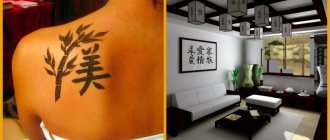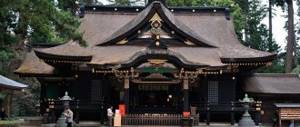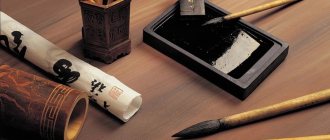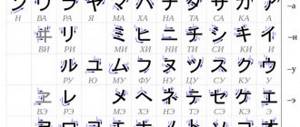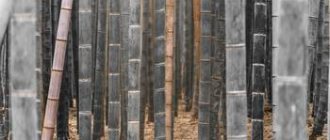Japan is a country that is unusual not only for its cultural traditions and historical heritage, but also for its architectural and interior features dictated by its specific climate. The archipelago is warm in summer, cool in winter in some regions, with occasional snow in some, and only Hokkaido gets really cold. The climate did not require the Japanese to think through central heating systems, and the optimal solution turned out to be kotatsu - a heated table covered with a heavy blanket. During the cold season, the whole family gathers around it; the heat emanating from it is enough to heat the living space.
Kotatsu
What is kotatsu
The Japanese warm kotatsu table is an element of a traditional interior, consisting of a frame, mattress, tabletop and heating element. The table is made of wood, covered with a futon or a thick, heavy blanket. Previously, safe braziers were used, which were placed under the tabletop; now heating elements are built directly into the furniture. The interior element was invented because there is no general heating in classic Japanese housing; a warm table turns into the main place, a hearth in the cold season. The whole family gathers around him. In modern times, kotatsu is an important household element that fully corresponds to the life philosophy of the islands - it is characterized by practicality, minimalism, and low resource consumption.
As a rule, the kotatsu is short and resembles a hut in shape. The internal space is insulated from the external cold due to the thickness of the blanket. The modern piece comes from an open hearth - once made in the family room of a traditional home, it was heated with coal. Over time, the material was replaced by kerosene, and later they began to use gas. Nowadays in Japan the most popular heating resource is electricity. A kotatsu with a built-in heater, which is usually covered with a futon, is safe to use, does not smell, is convenient for everyday use, and takes up little space.
Japanese house
Subspecies of kotatsu
Depending on the design of the frame and the materials used, it is customary to divide heating tables into groups:
- dining - tall, European-style furniture designed for use with a chair, comfortable for dining;
- hori - furniture with a recess for feet;
- Oki is a portable product in a classic style without a foot recess.
Traditional interior
The popularity of a warm wooden table is so great that a unique term has appeared in the language - kotatsumuri (snail kotatsu). It denotes a person who is very fond of and accustomed to kotatsu, and therefore perceives a warm table as his home. Often kotatsumuri are those who spend all their free time under a heavy, heated futon on a frame. The table is reflected in popular culture: in the famous manga Fire Force there is a character Tamaki Kotatsu.
Tatsuhiko Takimoto - Welcome to NHK!
1 …
Welcome to NHK!
Tatsuhiko Takimoto
Prologue
There are conspiracies in this world.
However, there is a ninety-nine percent chance that the plausible conspiracy stories you hear from other people are simply misconceptions or even deliberate lies. If you go to a bookstore, you will see books with titles like “The Great Jewish Conspiracy Destroys the Japanese Economy!” or “Super Conspiracy: The CIA is Hiding a Secret Treaty with Aliens!”, which are mere fictions.
Despite this... People love conspiracies.
Conspiracies. We are hopelessly enchanted by the bittersweet sound of this word.
Consider, for example, the emergence of the “Jewish Conspiracy” theory. The author is haunted by terrible complexes and experiences, for example: “Why am I poor?”, “Why do I live so poorly?”, “Why can’t I find a girlfriend?” There is constant pressure on his mind and body from both outside and inside.
This hidden discontent turns into a feeling of endless hatred towards society. It becomes anger.
However, the main source of this anger is his own cowardice.
He is poor because he lacks the skills to earn money. He doesn't have a girlfriend because he lacks charm. But it takes a lot of courage to see the truth and admit your imperfections. No person, no matter who he is, wants to look directly at his shortcomings.
Therefore, the author of the conspiracy theory looks externally for the reasons for his cowardice.
He creates a fictitious "enemy" outside of his inner world.
Enemy. My enemy. Public enemy.
“I cannot be happy because of the conspiracy of evil enemies. Because of this conspiracy, I cannot find the girl. Exactly! The Jews are to blame for everything. I cannot be happy because of the intrigues of the Jews. Damn Jews! I won't forgive you!
In truth, similar thoughts sometimes occur to Jews too.
Anyone who builds conspiracy theories should take a closer look at reality.
“Enemies” do not exist outside. "Evil" does not exist outside. Only you yourself are to blame for being a nonentity.
This is not a Jewish conspiracy, it is not a CIA conspiracy, and, as obvious as it may be, it is not an alien conspiracy. Everyone should remember this.
But still…
A tiny percentage of people become victims of a real conspiracy. There is one person who witnessed a conspiracy that is still operating in the strictest secrecy.
Who is this man?
It's me.
Chapter 1: Birth of a Fighter
Part one
One cold January night, I learned of the existence of a conspiracy.
In my tiny one-room apartment with six tatami mats[1], I tried to warm up while sitting at the kotatsu[2]. It was a terribly dreary night.
Despite the advent of the new millennium, there was no hope on the horizon. I even burst into tears while eating my New Year's soup[3].
For an unemployed twenty-two-year-old college dropout, the winter cold was piercingly cold. Sitting in the middle of my dirty room, where the floor was littered with scattered clothes and tobacco smoke saturated the walls, I sighed again and again.
How could it come to this?
That was all I could think about.
“Oh,” I groaned.
If I don’t correct my situation soon, I will completely sink and be lost to society forever. Moreover, I had already been expelled from college. I needed to quickly find a job and get back to normal life.
But I... just couldn't do it.
Why? What was stopping me?
The answer is simple - because I am a hikikomori[4].
The most relevant and popular social phenomenon of our days is hikikomori. It's me. Recluse.
It is said that there are now about two million hikikomori living in Japan. Two million is a huge number. If someone threw a stone on the street, it would hit a hikikomori... Of course, in reality this would not happen. Hikikomori don't go outside.
Anyway, I was one of those hikikomori that are so common in Japan. Not to mention that I was something of a veteran hikikomori. I only left my apartment once a week to go to a 24-hour supermarket for food and cigarettes. I had zero friends, and I slept sixteen hours a day.
This year marks four years since I became a hikikomori. Because of my lifestyle, I was kicked out of college.
True, I was such a disgusting hikikomori that I should have been given the title of professional. No matter who I was compared to, I would hardly lose easily to another hikikomori.
In fact, I was sure that if there was a “Hikikomori International Olympics”, I would do well in it. I thought that I could defeat any other hikikomori, no matter what country he was from: a Russian hikikomori who escapes reality with the help of vodka, an English hikikomori who finds salvation in drugs, or an American hikikomori who shoots at everything at home with a pistol.
Exactly! The famous founder of the Kyokushin style of karate[5], Masutatsu Oyama, also known as "The Divine Hand", supposedly spent his entire youth in the mountains in solitude, strengthening his spirit, before becoming the world's greatest karate master. If you look at it from this point of view, after sitting in this apartment for many years, I must be very close to becoming the strongest person in the world.
Well, it's worth a try. I decided to take a beer bottle and try to break it with the edge of my palm.
- Kiiiiii!!!
***
Bandaging my bloody hand, I sat down at the kotatsu again.
Anyway, my brain hasn't been working the way it's supposed to lately. Maybe it was because I slept sixteen hours a day? Or because I avoided contact with other people for more than six months?
All day my mind was clouded. I even felt unsteady when I went to the bathroom.
But I didn't care at all.
The more important issue was to end this miserable hikikomori lifestyle.
Exactly! I must end this rotten life of a hikikomori as soon as possible. Return to human society! Recover after expulsion! I will work, find myself a girlfriend and lead a normal life!
1 …
Table history
It is not known who invented heating a home with a coal fire - it happened a long time ago and is associated with the traditions of life in natural shelters, when people gathered around fires. Japanese winters are mild, with most of the archipelago experiencing virtually no sub-zero temperatures. Only in rare years does snow fall in winter and water bodies freeze. At the same time, the country is mountainous, volcanic, and therefore poor in forests, vegetation, and minerals. People have long understood the peculiarities of the land on which they lived, and realized that it was impossible to irrationally spend the little that came into their possession. Spending fossil fuels and trees to heat homes in Japan is an unaffordable luxury. Previously, houses were built from paper and a light frame - due to frequent earthquakes, strong winds and the rainy season, the home could not stand for long. The construction of durable stone buildings, typical of Europe, in Japan is extremely irrational. This is how a classic Japanese interior developed in a thin-walled house - a warm room with a fireplace around which people gathered.
The initial outbreak is called "irori". History has not preserved the name of the person who came up with the idea of covering it with clay and placing a low table on top. Even then, people realized that they could put a mattress or a thick blanket on top - this would keep the warmth longer. Around such a structure they sat on zabutons - pillows, and stuck their legs to the heat source.
Kotatsu in a modern house
The design of kotatsu changed in the 20th century along with a revision of the traditions of building residential buildings. The country is building buildings that are more reminiscent of European ones, and multi-storey buildings are being erected more and more often. Some design features remain: large windows, thin walls, and lack of heating are still typical for houses. A kotatsu with an electric heating element in such housing is the main source of heat. For connoisseurs of aesthetics and history, there are tables with drawers for heated stones, coal and water heaters.
Japanese futon mattress: from tradition to innovation
In the last publication we talked in detail about the traditional Japanese bed. And, if you study the previous material, it becomes clear that she is a futon. The traditional Japanese bedding, which is a thick cotton mattress, serves as a place to sleep at night, and in the morning it is either put away in a closet or transformed into other furniture: a sofa, armchair or ottoman. A futon is indispensable in small apartments, when it is not possible to install a good-quality bed - it is simply placed on the floor.
Futon mattress - a traditional Japanese place to sleep
Japan differs from a number of other countries in having unusual traditions, especially if we take European countries into account. But, nevertheless, each tradition in this case is justified and thought out to the smallest detail. The Japanese are an ascetic people of great intelligence, and if they even came up with the idea of sleeping on the floor, then they had good reasons for this.
The Land of the Rising Sun is one of the ten most densely populated countries, while in terms of the size of its territories it is inferior to many. And, accordingly, the population density in the state where cherry blossom day is celebrated is decent - more than 300 people per 1 km². Due to overcrowding, most Japanese did not have the opportunity to live in large houses. Often they didn’t even have a separate room for sleeping, so they had to sleep on the floor. It is worth noting that the hot Japanese climate contributed greatly to the emergence of this tradition.
The Japanese invented sleeping on the floor
The production of futons in Japan became widespread only in the 18th century, when the import of cotton was established. Whereas two centuries earlier the Japanese slept on harder tatami mats made of straw. In the 17th century, the futon was invented, but due to its high cost, such a bed was the prerogative of rich Japanese houses and was considered an element of luxury.
The Great Industrial Revolution changed everything. The product became publicly available, and the technology of its production also changed. In the 1940s, Japanese mattresses went out into the world - they were produced in the USA, and a little later in Europe.
Video: what is a futon
Today, entire collections have been developed, and the futon is no longer just a mattress. But before moving on to the new features, let's figure out what a modern Japanese-style stock hides inside.
Modern Japanese style bed
Fillers
The futon has become multi-layered, and the number of layers in a particular product varies. As before, in the production of the product preference is given to natural materials. These are mainly latex, cotton and coconut coir; more budget options are made from artificial latex and polyurethane foam. A separate block is worth highlighting products that are filled with orthopedic foam.
Basic materials for filling a futon:
Futon and its functions in a modern interior
Nowadays, futons are not used as often as a sleeping place on the floor. More often – it functions as a mattress, can be used to improve sleeping conditions on a sofa, placed on top of a regular mattress, transformed into a sofa, armchair, pouf, or used as an alternative to a topper.
Sofa
A futon sofa is transformable furniture, ideal for small spaces. When folded, it takes up minimal space, while when transformed it turns into a full-fledged place to sleep. When making frames for such sofas, preference is given to natural materials. The design is a simple book mechanism to which a Japanese mattress is attached and can be easily unfolded.
Also widely used are Japanese-style sofas with a low frame, on top of which a futon folded in three is attached. The first two layers form the seat, while the third forms the back.
Bed
A futon, as we said above, can also be used as a main mattress for a bed, or as a topper that gives additional rigidity to the surface. It is also indispensable when arranging a Japanese-style bed - such a bed is an order of magnitude lower than a traditional one.
Cultural characteristics
Kotatsu as the warmest place in the house is the Japanese equivalent of the kitchen hearth, the place where the whole family gathers. Kotatsu is comfortable, people sit on cushions around him, and their feet are placed near a source of heat, feeling that the cold of the outside world does not threaten for a minute. With such a table, lunches are comfortable, gatherings with friends are pleasant, and even working on a laptop turns into a source of joy.
The most comfortable piece of furniture
Communication over kotatsu has a special meaning. Two people talking while sitting under the same blanket. It brings you closer, fills you with comfort, and awakens the best childhood memories. People feel more freedom and get close easily. In Japan, kotatsu is the main symbol of home comfort. There is even a kotatsu train, where visitors can sit at their usual favorite tables.
Other countries
Similar systems exist in many countries around the world: economical and often sociable ways to stay warm while sitting still. In Spain and Portugal, Camilla mesa [ES]
is a small round table with
a brasero
heater (i.e. brazier) placed underneath it. In the Netherlands, a footslab was previously used. During World War I, British Royal Engineers built "Japanese hot water bottles" in the trenches.
Tajikistan and Afghanistan have very similar sandals
, which even today are used in many traditional homes as a
cozy family dining area
.
Another similar item called korsi
is also used in Iran.
In China and Korea, heated floors are traditionally used. Devices used in this manner are the Kan and Ondol
.
Structural elements of a kotatsu table
Heating tables are used more often in Japan:
- electric - modern, safe, quickly heating up, often equipped with two futons;
- coal - traditional, designed to be located in a deep wall niche, in the wall and floor of which coal heating elements are located.
Visually, the table is practically no different from a low European one - it is made in the shape of a square or rectangle, sometimes a circle or an oval. Leg height – 40 cm.
Elements:
The table is a source of heat
- wood frame;
- table top;
- heater (attached to the inside of the tabletop, where holders are mounted for this purpose);
- external table top;
- futon (sometimes two).
How to use it correctly
In modern times, kotatsu is used in the same way as centuries ago. A futon, blanket, blanket is thrown on top of it, then a tabletop is installed. This is how furniture turns into a comfortable place for tea, lunch, work, and writing. The legs are hidden under a futon - towards a heat source. The heating of the lower body is sufficient to make a person feel cozy and comfortable.
In Japan, kotatsu is the center of everyday home life. People sit at it when they watch TV, read, play, or communicate. On especially cold days, it is used for sleeping - they are laid so that the lower half of the body is under the futon.
Home comfort center
Japanese mattress for sleeping on the floor
Each nation has its own history, traditions, religion, customs and culture, which have developed over many centuries and influence all aspects of human life. There are differences even in terms of bedtime rules. So, in ancient times in Rus' people slept on stoves and blankets, and in Japan they slept on mats spread on the floor. The Japanese are famous for their excellent health, intelligence, restraint, wisdom, and high level of culture, therefore, today we will talk specifically about Japanese bedding, tatami, futon mattresses, what they are, how to use them, etc.
How to make a table with your own hands
Although it is easier to buy a ready-made table, some people prefer to make cozy furniture with their own hands. This is not difficult, just purchase a safe heater in advance. There are special heating elements for kotatsu - their use involves minimal risk of fire, which is especially important for furniture surrounded by textiles and paper.
You can make a frame table with your own hands, or you can buy a ready-made one. The heater is attached to the bottom of the tabletop with fasteners, a blanket is thrown on top, and a removable tabletop-shelf is placed even higher. Experts advise choosing a heavy top tabletop so that it securely presses the thick blanket - this way the likelihood of a fire hazard is minimal. For greater reliability, all furniture elements are impregnated with a fire retardant.
